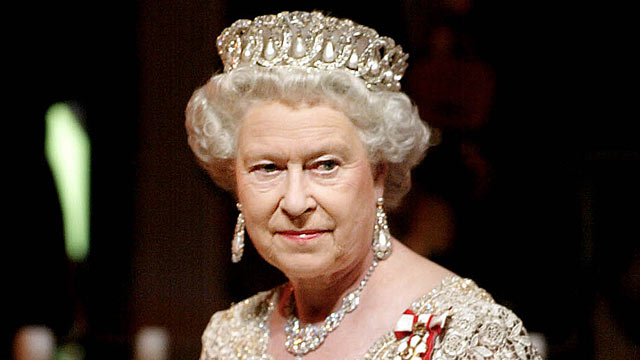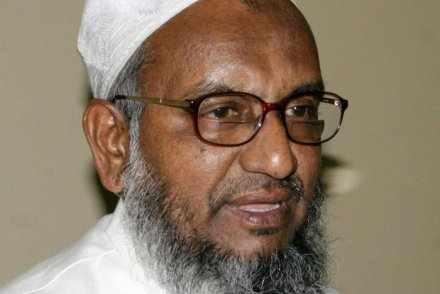e-News® | The NEWS Company…LONDON, Aug 30, 2015 : Queen Elizabeth II is set to become Britain’s longest-reigning monarch next month, surpassing the record of her great-great-grandmother Queen Victoria around 5:30 pm on September 9 after 23,226 days, 16 hours and roughly 30 minutes on the throne. The exact moment at which the 89-year-old monarch will reach the milestone is hard to pinpoint, as the precise time of her father king George VI’s death in his sleep in 1952 is not known. However, the queen will not indulge in fanfare or celebrations, marking the occasion with just another public engagement — this time opening a new railway line in Scotland. Nor are there widespread street parties or other official events planned.
The mood is in keeping with the sober style of her reign, something inherited from her father and grandfather King George V. The queen has “established a record of unimpeachable integrity”, said historian David Starkey. “I think she is immensely respected. She has played the role with a certain dignity. In this touchy-feely age she has performed… in a slightly old-fashioned way.” While queen Victoria, who reigned for 63 years and 216 days between 1837 and 1901, saw Britain’s power reach its zenith with a global empire and vast industrial expansion, the current queen’s rule has largely been one of British contraction.
It has seen Britain rebuild following World War II, dismantle its empire and turn to Europe. The kingdom has weathered economic collapse in the 1970s and revival in the 1980s, unrest in Northern Ireland, the emergence of a less deferential society and mass immigration changing the country’s make-up. The queen also calmly steered the monarchy out of the scandals that engulfed her reign in the 1990s. She described 1992, in which her sons Prince Charles and Andrew separated from their wives and daughter Princess Anne divorced her husband, as her “annus horribilis”. Her popularity reached its nadir when the “people’s princess” Diana, by then divorced from her son and heir Prince Charles, was killed in a car crash in Paris in 1997. Britain was plunged into an unprecedented outpouring of public grief and the monarch was accused of lacking compassion and misreading the national mood in the aftermath.
Her decision to keep the family — including Diana’s sons, Princes William and Harry — mourning privately at their estate in Scotland rather than returning to London was deeply unpopular, as was the failure to lower the royal flag as Buckingham Palace. After days of intense pressure, she returned to London and addressed the nation on TV, beginning a slow rehabilitation of the monarchy that saw her golden jubilee warmly celebrated by the public in 2002.
– Essence of ‘Britishness’ –
Judith Rowbotham, visiting research fellow at Plymouth University, said: “She has been on the throne so long, it’s difficult to conceive of the country without her. “It’s part of the framework of what you think of when you think of Britishness.”
Andrew Gimson, author of “Gimson’s Kings and Queens: Brief Lives of the Monarchs since 1066”, said that had the queen’s heavy-smoking father not died young at 56, “we wouldn’t be celebrating now”.
“Either the king or queen doesn’t succeed at an early age, or they succeed young but die young as well. It’s unusual both to succeed young and live for a very long time,” Gimson told #thenewscompany. Of the queen’s reign, he added: “I think it will be looked back on as a staggering achievement to remain so securely on the throne through a period of such tremendous social and economic change.” Her record-breaking reign means there are now three generations of future monarchs waiting in line, for the first time since Victoria’s death.
The queen’s eldest son Prince Charles, 66, is now older than the British retirement age. He is the longest-serving heir to the throne in British history, having held the position since the age of three. Next in the order of succession is his eldest son Prince William, 33, and his eldest grandson Prince George, who turned two in July.
– ‘Quietly and modestly’ –
Writing in the preface to “Elizabeth II: The Steadfast”, a new biography by former foreign secretary Douglas Hurd, William said his grandmother’s “example and continuity” was a “model for a life of service”.
“Time and again, quietly and modestly, the queen has shown us all that we can confidently embrace the future without compromising the things that are important,” he wrote. On her 21st birthday, five years before the early death of her father, the then-princess Elizabeth dedicated her whole life “whether it be long or short” to serving the Commonwealth and its people.
Besides Britain, she is queen of 15 other realms, including Canada, Australia, New Zealand and Jamaica. She has been queen of several other nations, including South Africa, Sri Lanka, Pakistan and Nigeria. Though she is the oldest monarch in the world following the death of 90-year-old king Abdullah of Saudi Arabia in January, she is only the second longest-serving.
That title is held by Thailand’s 87-year-old King Bhumibol Adulyadej, who took the throne in 1946.




































